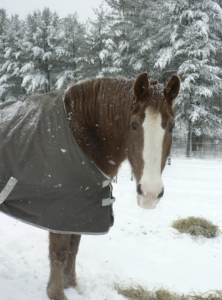Promising grape forecast

OBSERVER File Photo This year’s grape harvest is expected to hold steady, though it won’t break any records, according to the U.S. Department of Agriculture’s Northeastern Region Fruit Forecast
The U.S. Department of Agriculture recently released the Northeastern Region Fruit Forecast for August 2018, and this year’s grape harvest is expected to hold steady, though it won’t break any records. According to the forecast, grape production across New York state is expected to be 175,000 tons, compared to 187,000 tons last year. Terry Bates, director of the Cornell Lake Erie Research & Extension, said the local grape forecast is looking good for 2018, too.
The Lake Erie region is the largest grape-growing region east of the Rocky Mountains. Concord and Niagara grapes are the top two varieties grown in the Lake Erie region, which is comprised of 32,000 acres in western New York and Pennsylvania.
Bates explained, “It’s kind of an average year, which is a good thing. We really worry if either the crop is way too low or way too high…A lot of our research is how to do accurate crop estimates, and if it’s too big, how to bring that down to not hurt the vines.” What does an average year look like? According to Bates, “Three to four tons per acre is too low. Ten to 12 tons per acre is way too much. We want to be somewhere around seven to nine tons per acre, which is where most growers are right now. In general, what we’re hearing is that it’s a medium size or slightly larger crop this year.”
Speaking of July’s weather, Bates said, “Season-wise, we worried that it was getting too dry. Here, we rely on rainfall and management practices to conserve soil moisture — they have irrigation systems in California. But we got rain at the right time!” Other regions in the state have not been so fortunate. The Finger Lakes region, which was similarly dry, has experienced significant rainfall and flooding recently to the detriment of their projected grape crop.
Anyone who has recently sampled a grape or two straight from the vine has likely had a very hard, sour experience! Bates said this is because the grapes have not yet gone through the ripening process called “veraison.” During this biological change, the grapes soften up, become sweeter and change color — a process that is expected to begin this week. “In our climate, for Concords the time from bloom to veraison is 69 days. It’s like clockwork! It’ll take about a month for grapes to accumulate sugar and color, and then the organic acids will start to drop, and they’ll become tastier. The plants do that naturally so that animals will eat them and distribute the seeds,” Bates explained.
How does Lake Erie’s grape production compare to grape production elsewhere in New York? “Compared to the Finger Lakes and Long Island, we have more than double the production of anyone else. Most of their grapes go into making wine for small wineries. What we do here in western New York is grow Concord and Niagara for the juice industry. Companies like Welch’s, Constellation and Cott process the grapes for juice, jams and jellies…We grow a lot of grapes but it goes into a very competitive market — not necessarily the same market as small wineries,” said Bates.
While most people may only be familiar with some of the 25 small wineries throughout the area, they actually make up a very small percentage of the 600-plus growers in the Lake Erie region. The majority of the region’s Concord and Niagara growers belong to a large cooperative, such as the National Grape Co-op, which owns Welch’s. Bates explained, “Growers will partner with area wineries, but the volume of grapes that those wineries need is so small compared to the big juice companies. A grower may have 200 acres of grapes: 180 of those acres will go to the juice industry, and 20 acres will go to the winery. The scale is totally different.”
Those who live in or travel throughout the Lake Erie region can look forward to a fragrant experience soon. “In a couple weeks, you’ll smell the aromatic compound that is the ‘grapeiness,’ which is the essence of grape that companies will extract and put in grape gum or Kool-Aid. It’s naturally produced by Concords,” Bates stated. The “grape belt” extends approximately 60 miles from Buffalo just past Erie, but is only three miles wide, according to Bates. “All the grapes are right up against the lake because Lake Erie influences the temperature of the area. Southeast of here, there is a rise in elevation of 700 to 800 feet — past Mayville, there’s no grapes because it’s too cold. This makes it good for cherries and peaches, too! But grapes have always been the king in the area.”

OBSERVER File Photo
This year’s grape harvest is expected to hold steady, though it won’t break any records, according to the U.S. Department of Agriculture’s Northeastern Region Fruit Forecast






